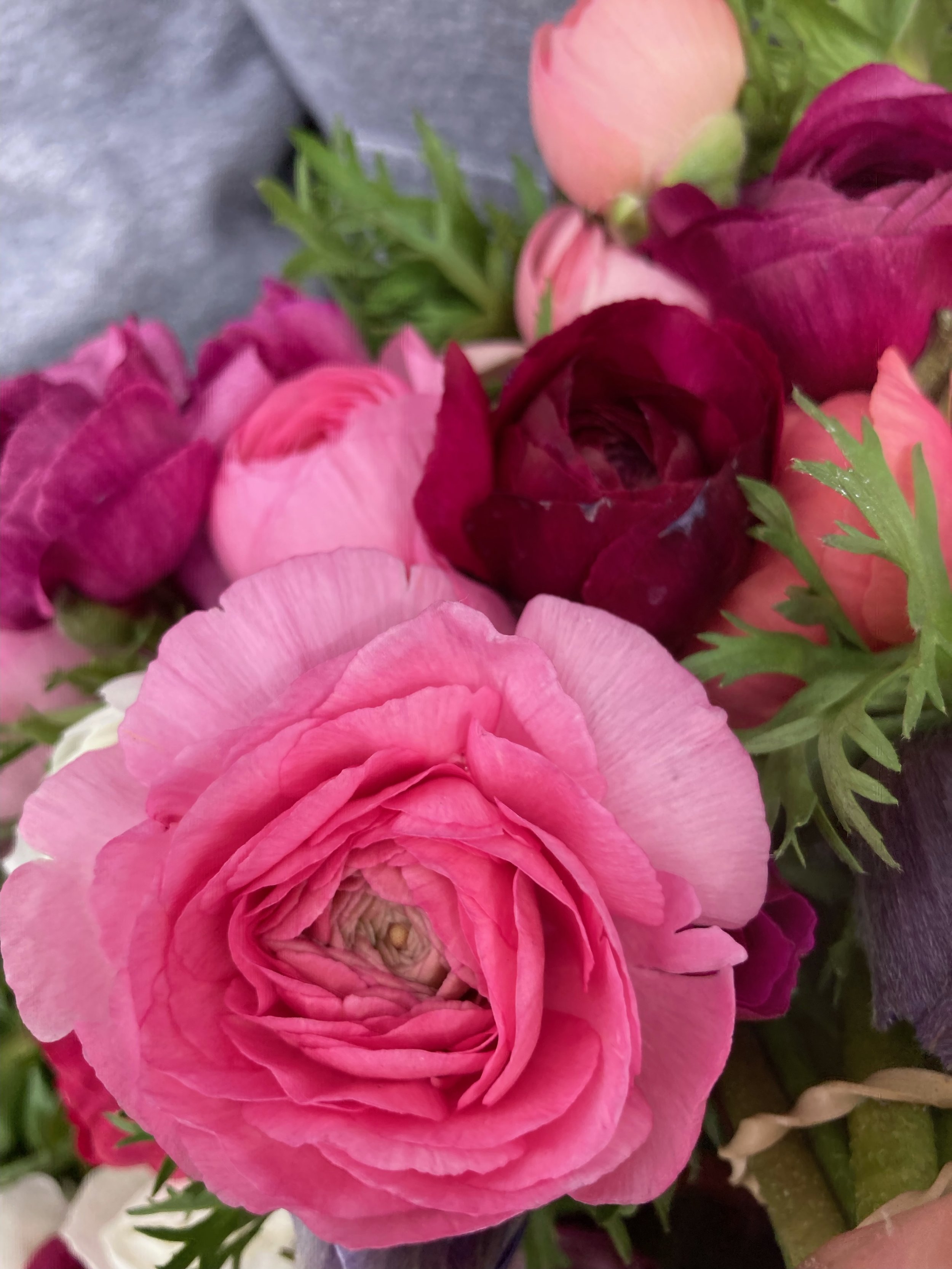Whole Farm CSA - Week of May 16th
Full: lettuce mix with nasturtiums, two kinds of micros, choice of herb, scallions, bacchus radishes
Half: lettuce mix with nasturtiums, micros, choice of herb, scallions, bacchus radishes
Hi everyone!
It’s a bit gray today (but dry!) so the crew is busy with transplanting - perennials are going in on the flower side and new successions of kale, collards, scallions, broccolini and more are all making their field debuts and will be headed your way mid-july. I have a fair few announcements and notes to share with you all this week, so I’ll jump right in.
Flowers: As Whole Farm CSA members, each of you receive a bouquet of freshly cut flowers with your box each week, located in the labeled buckets on the shelf . Right now ranunculus and anemone are the stars of the show. I love both because they evolve so much and last so long! And the anemones especially have such a fun, whimsical look.
Farm stand: Beginning next week, we’re upping our farmstand inventory! We’ve already added a selection of beans from Bozeman’s own Yellowstone Coffee Roasters and will be adding some items from our friends up at Conservation Grains as well as a variety of legumes from Highland Harmony over in Willsall. I personally can’t wait to get my hands on all of these local goods!
Lending library: We’re starting a GVB lending library! Books about cooking, gardening, land stewardship or anything related are welcome! We plan to operate on a take a book/leave a book principle, so if you’d like to contribute, start looking through your collections and feel free to bring things by when you come for your CSA. We’re still in the inventory building phase right now (ie: looking through our own collections and deciding which we’re willing to temporarily part with) but the goal is to have a little collection to start sharing once June rolls around. There will be a shelf in the farmstand labeled for contributions!
This week’s box should look pretty familiar, but that doesn’t make it any less exciting! You’ll all be getting a large lettuce mix with some gorgeous edible flowers (nasturtiums! we love them not only for their beautiful color but also for their natural pest control abilities, which make them a common companion plant in many gardens and greenhouses) as well as radishes, scallions, and an assortment of microgreens and herbs. I really liked this How to Pesto Anything article - perfect for an herb and micro heavy week.
This could also be a good week to pick up some extra eggs when you stop by (the unlabeled cartons to the right of the CSA eggs are all for sale) -- this quote that I read got me very excited about the power of a farm fresh egg: “Farm fresh eggs perform superbly in baking. They are so fresh relative to store-bought that cakes and soufflés made with them are much more airy, as are frittatas, the fried-then-baked Italian omelet.” Scallions, herbs, and micros all do very well in a frittata, and I also found a few recipes for savory breakfast muffins that looked intriguing! (One is vegan, but substitute the flax for an egg or two and you’ll be good to go).
Mini Egg Strata Recipe in a Muffin Tin - Entertaining with Beth (uses 10 eggs!)
Savory Muffins with Kale and Chives (Don't Tell Anyone They're Vegan)
The last thing I have to share this week is a pizza recipe from my favorite food blogger’s new cooking zine, Cook Casual:. Before we dive in, a quick note from the author about the joys of late spring cooking:
Sure, there are four typical seasons in a calendar year, but seasonal produce is so much more nuanced. How I cook in March is entirely different from how I cook in May, even though it’s still spring! Late spring cooking, to me, is all about making way for the breezy cooking of summer. I desire fewer oven-based recipes and more outside cooking… this issue helped me stay in the spring state of mind and genuinely enjoy some of the shorter-season items.
I just ordered my first copy yesterday and am enjoying the digital copy while I wait ever so patiently for my print edition to arrive — it’ll be going into the lending library once I’ve copied down my favorite recipes! Her emphasis on seasonal cooking is what I love the most, and the recipes are always incredibly creative while being very manageable for a busy home cook. I also really appreciate her emphasis on substitutions and improvising with what you have so definitely feel free to experiment with variations. Since its a paid publication I can only share it as a screenshot image but I recommend getting a subscription of your own! Recipe and a note on preserved lemons below.
*4 to 6 lemons (depending on size of mason jar)
*about 1/2 cup coarse kosher salt
*juice from 2 lemons
Directions:
1. Rinse your lemons well and grab a sterilized mason jar.
2. Slice the lemons in half in one direction and then in half again in the other, creating four segments but leaving them intact on one side.
3. Add about 2 tbsp of salt to the bottom of the jar. Pour salt into the center of the lemon, separating the quarters of the lemons to ensure salt gets into every nook and cranny
3. Add the lemon to the jar, cover with more salt, and repeat the process. Slightly squeeze the lemons in the jar after every drop.
4. Cover with a tight lid and leave in a cool, dark place for 4 to 6 weeks. DO NOT OPEN THE JAR! I PROMISE YOU IT’S WORKING
5. After 4 to 6 weeks, you should be left with fermented, sappy, softened lemons and their juices to use in salad dressings, pasta, tagines, or even dessert.
Thanks for reading and enjoy!
Sasha






